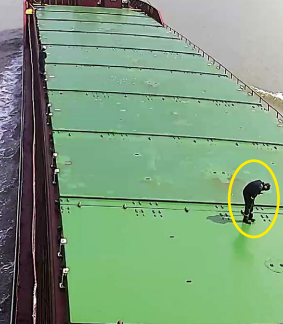As UK MAIB reports in its most recent Safety Digest, on a clear day with calm seas the crew of a cargo vessel were preparing to open the cargo hold hatch covers, which were sealed by several wedges.
A crew member was releasing the wedges with a sledgehammer in the course of their normal operations. The crew member quickly approached the wedge and, without taking time to prepare, swung the sledgehammer.
When the hammer impacted the wedge it remained lodged in place and shattered, sending debris flying towards the crew member. A small fragment of the securing wedge penetrated the crew member’s right leg, just below the knee. The crew member received first aid and was signed off work for 3 days to recover from their injury.

Lessons learned
- Check → Perform a thorough check of equipment and the work area before operations begin; deterioration of parts can cause failure even when the correct procedure and planning routines are followed.
- Plan → Take time to consider how to safely perform an action. Assessment of the area and level of force required, combined with careful alignment of the swing, might have resulted in an effective strike and prevented the catastrophic failure of the wedge.
- Aware → Before using heavy tools, be aware of what could happen if things go wrong. In this case, swinging the hammer away from the body might have reduced the risk of being struck either by flying debris or the hammer itself if the wedge was missed.




























































